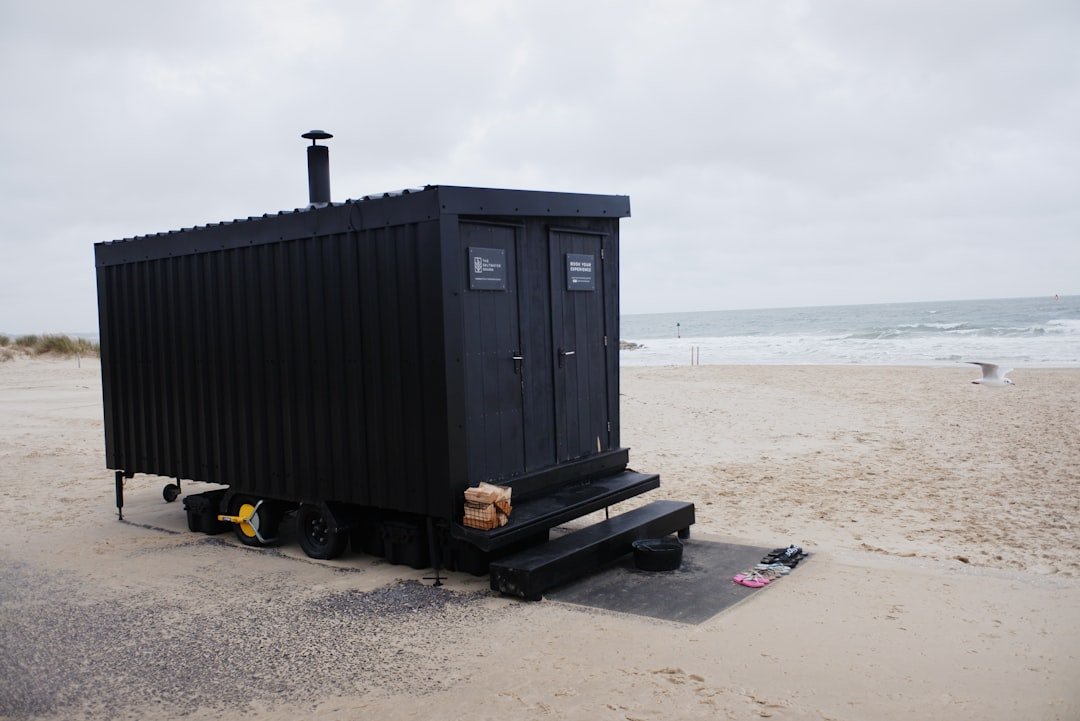Selecting the appropriate hitch for your vehicle is a critical first step in ensuring safe and effective towing. Hitches come in various classes, each designed to accommodate different weight capacities and types of trailers. For instance, Class I hitches are suitable for lightweight trailers, such as small utility trailers or bike racks, with a maximum towing capacity of around 2,000 pounds.
In contrast, Class V hitches are built for heavy-duty applications, capable of towing up to 20,000 pounds or more, making them ideal for larger trailers like fifth wheels or heavy-duty boats. Understanding your vehicle’s towing capacity, which can typically be found in the owner’s manual or on the manufacturer’s website, is essential in determining the right hitch class. Additionally, the type of hitch you choose may depend on the specific towing needs you have.
For example, if you plan to tow a travel trailer, a weight-distributing hitch may be necessary to evenly distribute the weight across your vehicle and trailer axles. Conversely, if you are using a hitch for a bike rack or cargo carrier, a simple receiver hitch may suffice. It is also important to consider the compatibility of the hitch with your vehicle’s make and model.
Some vehicles may require specific hitches designed to fit their frame and mounting points. Therefore, consulting with a professional or utilizing online resources that provide compatibility information can help ensure you select the right hitch for your needs.
Key Takeaways
- Choose a hitch that is compatible with your vehicle’s make and model to ensure a proper fit and safe towing experience.
- Gather the necessary tools and materials, such as a wrench, socket set, and hitch receiver kit, before starting the installation process.
- Prepare your vehicle by removing any obstacles or obstructions that may hinder the installation process, and ensure that the vehicle is on a level surface.
- Follow the manufacturer’s instructions carefully to install the hitch receiver securely onto your vehicle, and double-check all connections for tightness.
- Wire the trailer hitch according to the vehicle’s electrical system, and test the connections to ensure proper functionality before towing.
Gathering the Necessary Tools and Materials
Once you have chosen the appropriate hitch for your vehicle, the next step involves gathering all necessary tools and materials for the installation process. A well-prepared workspace can significantly streamline the installation and reduce potential frustrations. Common tools required for hitch installation typically include a socket set, wrenches, a torque wrench, and a drill with appropriate bits if drilling is necessary.
Additionally, having safety equipment such as gloves and safety glasses is advisable to protect yourself during the installation. In terms of materials, aside from the hitch itself, you will need various hardware components that often come with the hitch kit. This may include bolts, washers, and nuts specifically designed for securing the hitch to your vehicle’s frame.
If your hitch requires electrical wiring for trailer lights, you will also need wiring harnesses and connectors compatible with your vehicle’s electrical system. It is wise to review the installation instructions provided with your hitch to ensure you have all necessary components before beginning the installation process. This preparation can save time and prevent interruptions during the installation.
Preparing Your Vehicle for Installation

Before diving into the installation of your hitch receiver, it is crucial to prepare your vehicle adequately. Start by parking your vehicle on a flat surface and engaging the parking brake to prevent any movement during the installation process. If possible, using jack stands or ramps can provide additional clearance under the vehicle, making it easier to access mounting points.
It is also advisable to clean the area where the hitch will be installed; removing dirt and debris can help ensure a secure fit and prevent corrosion over time. Next, consult your vehicle’s owner manual for specific instructions regarding hitch installation. Some vehicles may have pre-drilled holes or factory-installed mounting points that simplify the process.
Familiarizing yourself with these details can save time and effort during installation. Additionally, if your vehicle has any underbody panels or exhaust components that may obstruct access to mounting points, consider removing them temporarily. This step not only facilitates easier access but also allows you to inspect these components for any wear or damage that may need attention.
Installing the Hitch Receiver
| Step | Description |
|---|---|
| Step 1 | Locate the mounting points on the vehicle frame |
| Step 2 | Attach the hitch receiver to the vehicle frame using bolts |
| Step 3 | Tighten the bolts to the specified torque |
| Step 4 | Check the hitch receiver for secure attachment |
With your vehicle prepared and all necessary tools at hand, you can begin installing the hitch receiver. Start by positioning the hitch under your vehicle in alignment with the mounting holes. Depending on the design of your hitch and vehicle, you may need an assistant to help hold it in place while you secure it.
Aligning the hitch correctly is crucial; misalignment can lead to improper towing dynamics and potential safety hazards. Once aligned, insert bolts through the mounting holes of the hitch into the corresponding holes on your vehicle’s frame. It is essential to follow the torque specifications provided in the hitch installation manual to ensure that all bolts are tightened adequately without over-torquing them, which could damage either the hitch or your vehicle’s frame.
After securing all bolts, double-check that everything is aligned correctly and that there are no gaps between the hitch and the vehicle frame. This step ensures that your hitch will perform optimally when towing.
Wiring the Trailer Hitch
After successfully installing the hitch receiver, attention turns to wiring for trailer lights if applicable. Proper wiring is essential for safe towing as it ensures that brake lights, turn signals, and running lights on the trailer function correctly. Most modern vehicles come equipped with a wiring harness specifically designed for towing purposes; however, if your vehicle does not have one, you may need to install an aftermarket wiring kit.
Begin by locating your vehicle’s tail light assembly; this is where you will connect the wiring harness. Carefully remove any necessary panels or covers to access these connections without damaging them. Follow the instructions provided with your wiring kit closely; typically, this involves connecting wires from the harness to corresponding wires in the tail light assembly using either splices or connectors.
It is crucial to ensure that all connections are secure and insulated to prevent short circuits or corrosion over time. Once all connections are made, route the wiring harness along a safe path under your vehicle to avoid any moving parts or heat sources that could damage it during operation. Many kits come with zip ties or clips to secure the wiring in place.
If your trailer has a 7-pin connector, ensure that it is properly mounted at a convenient location on your vehicle’s rear end for easy access when connecting a trailer.
Testing the Hitch and Electrical Connections

With both the hitch receiver installed and electrical connections made, it is time to conduct thorough testing before hitting the road with a trailer in tow. Start by visually inspecting all connections—both mechanical and electrical—to ensure everything appears secure and properly installed.
Once connected, activate your vehicle’s turn signals, brake lights, and running lights while observing whether they function correctly on the trailer as well. If any lights do not illuminate as expected, recheck your wiring connections for any loose or incorrect placements.
Additionally, it is wise to perform a test drive with an empty trailer to assess how well everything operates under real-world conditions.
Securing the Hitch and Final Adjustments
After confirming that everything works correctly during testing, it’s time to secure everything properly and make any final adjustments needed for optimal performance. Ensure that all bolts are tightened to their specified torque settings one last time; this step is crucial as vibrations from driving can loosen hardware over time if not secured adequately. If your hitch has any additional safety features such as pins or clips for securing it in place when not in use, make sure these are also properly installed.
If you notice any misalignment during testing or if there are any unusual noises when driving with a trailer attached, take time to adjust accordingly. Sometimes minor adjustments can significantly improve towing stability and safety. For instance, if you find that your trailer sways excessively while driving, consider adjusting weight distribution or checking tire pressures on both your vehicle and trailer.
Tips for Safe Towing and Maintenance
Once your hitch installation is complete and everything is functioning correctly, understanding safe towing practices becomes paramount for ensuring both your safety and that of others on the road. Always adhere to weight limits specified by both your vehicle manufacturer and hitch manufacturer; exceeding these limits can lead to dangerous driving conditions and potential accidents. Additionally, familiarize yourself with local towing laws and regulations as they can vary significantly by region.
Regular maintenance of both your hitch and trailer is essential for long-term reliability and safety. Periodically inspect all components of your hitch system for signs of wear or damage; this includes checking bolts for tightness, inspecting wiring connections for corrosion or fraying, and ensuring that any safety chains are intact and properly secured when towing. Keeping an eye on tire pressures of both your vehicle and trailer can also help maintain optimal handling while on the road.
Moreover, practice safe driving techniques when towing a trailer; this includes allowing extra stopping distance due to increased weight and being mindful of turning radii when navigating corners or tight spaces. By following these guidelines and maintaining vigilance regarding both equipment condition and driving practices, you can enjoy safe and successful towing experiences for years to come.
If you’re looking to maximize the storage space in your kitchen, you may want to check out this article on organizing tips for effective use of drawer space. Having a well-organized kitchen can make it easier to find the tools you need for installing a trailer hitch. Additionally, if you’re planning on grilling some chicken while working on your trailer hitch project, you might want to read up on marinating chicken for maximum flavor. And don’t forget to take a break and enjoy a refreshing beverage by learning how to zest citrus fruits without getting the bitter pith in this article on
